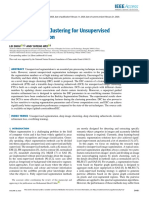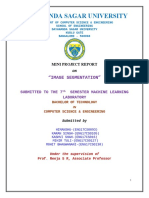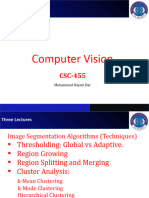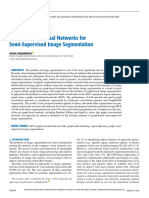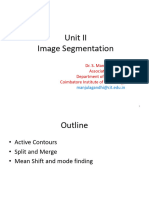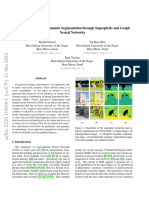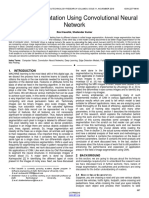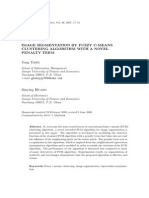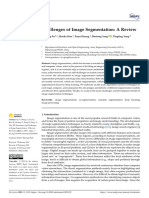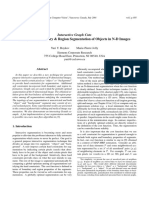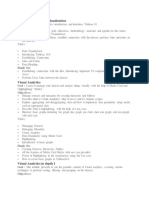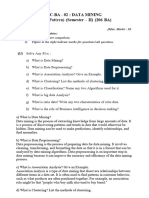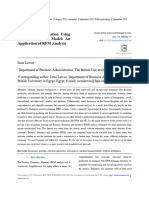0% found this document useful (0 votes)
105 views23 pagesDeep Image Clustering for Experts
This document proposes an unsupervised deep image clustering (DIC) method for image segmentation. It consists of two parts: 1) a feature transformation subnetwork that extracts features from the image using a CNN architecture, and 2) a deep clustering subnetwork that iteratively clusters the features into segments. The method is tested on the Berkeley Segmentation Dataset and achieves state-of-the-art performance according to multiple evaluation metrics, outperforming methods like K-means, mean-shift, and normalized cuts. Visual results also show it effectively merges similar regions and separates diverse ones.
Uploaded by
Unaixa KhanCopyright
© © All Rights Reserved
We take content rights seriously. If you suspect this is your content, claim it here.
Available Formats
Download as PPTX, PDF, TXT or read online on Scribd
0% found this document useful (0 votes)
105 views23 pagesDeep Image Clustering for Experts
This document proposes an unsupervised deep image clustering (DIC) method for image segmentation. It consists of two parts: 1) a feature transformation subnetwork that extracts features from the image using a CNN architecture, and 2) a deep clustering subnetwork that iteratively clusters the features into segments. The method is tested on the Berkeley Segmentation Dataset and achieves state-of-the-art performance according to multiple evaluation metrics, outperforming methods like K-means, mean-shift, and normalized cuts. Visual results also show it effectively merges similar regions and separates diverse ones.
Uploaded by
Unaixa KhanCopyright
© © All Rights Reserved
We take content rights seriously. If you suspect this is your content, claim it here.
Available Formats
Download as PPTX, PDF, TXT or read online on Scribd
/ 23
